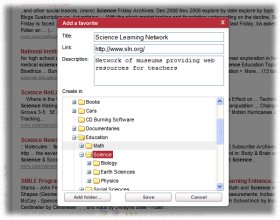|
Education
Web
Viewing 1-2 of 2 total results
etc.). • Using absolute and relative location to identifying major mountain ranges, major rivers, and major climate and vegetation zones. • Constructing and reading a variety of effective representa- tions of the earth such as maps, globes, and photographs (e.g., physical, politi...
1
0
etc.). • Using absolute and relative location to identifying major mountain ranges, major rivers, and major climate and vegetation zones. • Constructing and reading a variety of effective representa- tions of the earth such as maps, globes, and photographs (e.g., physical, political, topographic, computer generated, and special purpose maps). i • Identifying and using basic elements of a map. • Using grid systems to locate places on maps and globes (e.g., longitude and latitude
29
0
http://education.vermont.gov/new/pdfdoc/pubs/grade_expectations/history_social_sciences.pdf#page=29
education.vermont.gov/new/pdfdoc/pubs/grade_expectations/history_social_s...
• Using absolute and relative location to identifying major mountain ranges, major rivers, and major climate and vegetation zones. • Constructing and reading a variety of effective representa- tions of the earth such as <span class="highlight">maps</span>, globes, and photographs (e.g., physical, political, <span class="highlight">topographic</span>, computer generated, and special purpose <span class="highlight">maps</span>). i • Identifying and using basic elements of a map. • Using grid systems to locate places on <span class="highlight">maps</span> and globes (e.g., longitude and latitude). • Using appropriate
30
0
http://education.vermont.gov/new/pdfdoc/pubs/grade_expectations/history_social_sciences.pdf#page=30
education.vermont.gov/new/pdfdoc/pubs/grade_expectations/history_social_s...
etc.). • Using absolute and relative location to identifying major mountain ranges, major rivers, and major climate and vegetation zones. • Constructing and reading a variety of effective representa- tions of the earth such as <span class="highlight">maps</span>, globes, and photographs (e.g., physical, political, <span class="highlight">topographic</span>, computer generated, and special purpose <span class="highlight">maps</span>). i • Identifying and using basic elements of a map. • Using grid systems to locate places on <span class="highlight">maps</span> and globes (e.g., longitude and latitude
more pollution than others. • use maps (e.g., topographic, hydrographic, highway) to identify land features and their locations; • recognize that some changes in the Earth’s surface, such as earthquakes and volcanic eruptions, are abrupt, while other changes happen very...
1
0
more pollution than others. • use maps (e.g., topographic, hydrographic, highway) to identify land features and their locations; • recognize that some changes in the Earth’s surface, such as earthquakes and volcanic eruptions, are abrupt, while other changes happen very slowly (e.g., uplift and wearing down of mountains); and • explain how human activities (such as reducing the amount of forest cover, increasing the amount and variety of chemicals released into the atmosphere, and waste
45
0
http://www.sde.ct.gov/sde/lib/sde/PDF/DEPS/Career/STC/contents_standards.pdf#page=45
www.sde.ct.gov/sde/lib/sde/PDF/DEPS/Career/STC/contents_standards.pdf#pag...
more pollution than others. • use <span class="highlight">maps</span> (e.g., <span class="highlight">topographic</span>, hydrographic, highway) to identify land features and their locations; • recognize that some changes in the Earth’s surface, such as earthquakes and volcanic eruptions, are abrupt, while other changes happen very slowly (e.g., uplift and wearing down of mountains); and • explain how human activities (such as reducing the amount of forest cover, increasing the amount and variety of chemicals released into the atmosphere, and waste
|
